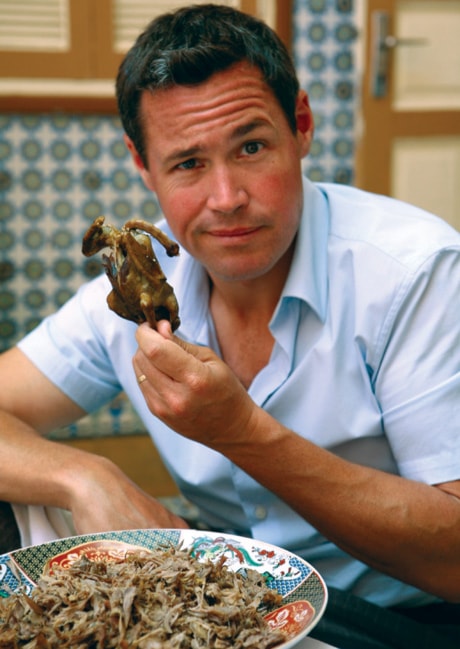TORONTO — Pigeon pie. Cow-head tacos filled with eyeballs, noses and brains. And wasp paste made from a ground-up hive.
Sounds like a menu from a challenge in Survivor, only in this case the dishes aren’t intended to shock.
They’re the meals served up in Extreme Cuisine, a new series that journeys the globe to highlight renewable and sustainable harvested foods of different cultures.
Host Jeff Corwin, the famed conservationist who bravely eats all the unconventional spreads offered to him by locals in the series, says the idea is to celebrate communities that waste nothing.
“This is what they eat,” he said. “This isn’t supposed to be gross-out food, this isn’t Fear Factor food. It’s really about connecting to people through the food that they eat and opening your eyes to the bigger world.
“We sort of have this filter for all the foods that we highlight and they all have to fall within my clearance of sustainability, locality.”
Debuting Jan. 7 on Food Network Canada, Extreme Cuisine travels around the U.S. and to far-flung locals including Thailand, Greece, Morocco and Peru to profile the indigenous foods and local customs that rely on natural resources.
In the premiere episode in Mexico, Corwin eats pan-seared grubs, tripe soup and the aforementioned wasp paste that caused an adverse reaction.
“That night my tongue began to swell up, my mouth was very very sore and I thought I was having an allergic reaction,” said Corwin, an Emmy Award-winning anthropologist from the Animal Planet series The Jeff Corwin Experience and Corwin’s Quest.
“I realized . . . it was all the stingers. The stingers get broken up but the poison in the barbs probably still makes it through. Lots of roughage in this show.”
Incredibly, Corwin said he never once became ill.
“Rarely did we ever film or eat or cook in a place with running water, but everything was so fresh and so perfectly prepared that I never once got sick.”
Corwin has already started filming a second season of the series and said they’re considering visiting Canada to profile indigenous foods, French-influenced meals and the salmon industry.
His most recent adventure was in Hawaii where he ate the eyeball of a roasted pig on the insistence of a local elder who said it was customary as their guest.
Eating locally is something Corwin also does at home with his wife, Natasha, and their two young daughters, Maya Rose and Marina Faye.
Living on a small island off the coast of southeast Massachusetts, the family grows their own vegetables, buys eggs produced on the mainland and only eats protein if they known its point of origin. Corwin also harvests fish and recently started making cheese — something he learned on his “Extreme Cuisine” journeys.
“We’re not 100 per cent off the food grid, but we’re trying,” said Corwin. “Doing this show, though, really opened my eyes up to the global importance of doing this, the idea of: wow, this lady lives in this village, and everything she will eat and everything she will produce will come from this community.
“And it’s not done out of the luxury of, ’Oh hey guys, look at me, I’m green.’ It’s done out of necessity.”
After he downed the eye, which he described as “gelatinous” and difficult to chew (“It just bounced from molar to molar to molar,” he said), he then found out that it was a joke.
“They had set me up,” he said with a laugh.
